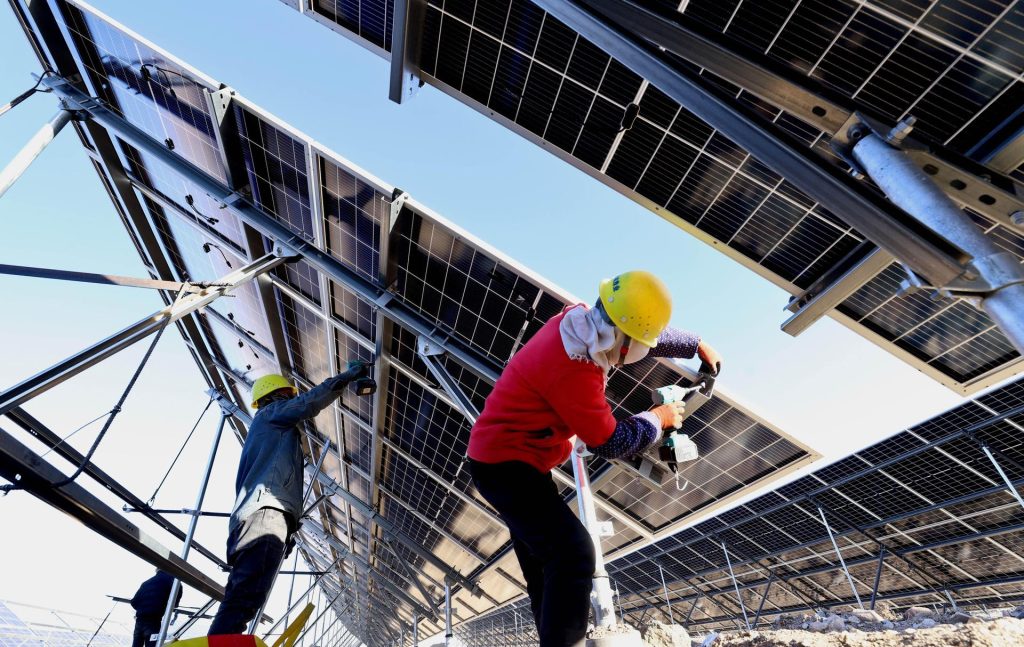The Decisive Decade Falters: Climate Action at a Standstill as Global Emissions Climb

Photo by Cynthia Lee/Alamy Stock Photo
By Ange de la Victoire DUSABEMUNGU
A Reckoning Ten Years Post-Paris: Not One Indicator On Track for 1.5°C Goal
WASHINGTON/BERLIN/SAN FRANCISCO, 2025 – Halfway through what experts deem the “decisive decade” for climate stability, a new report by Bezos Earth Fund and World Resources Institute among others delivers a startling verdict: Global efforts to combat the climate crisis are failing dramatically. According to the comprehensive State of Climate Action 2025 report, released by a coalition of leading international organizations, not a single one of the 45 indicators assessed across the highest-emitting sectors is currently on track to meet its 2030 benchmark compatible with limiting warming to 1.5 degrees Celsius (°C).
The report paints a precarious picture of “mixed progress”, characterized by “remarkable advances” alongside “slow progress and even backsliding in other areas”. While humanity has the blueprints for economic transformation, the pace of delivery will determine whether the promise of the Paris Agreement is fulfilled.
Global greenhouse gas (GHG) emissions, far from peaking, continue to climb, reaching 56.6 gigatonnes of carbon dioxide equivalent (GtCO2e) in 2023. Consequently, the past 10 years have been the hottest on record, with 2024 marking the warmest year yet, registering 1.55°C of warming for a full year. The document serves as a “wake-up call”, underscoring that achieving necessary breakthroughs demands “far greater and better aligned efforts”.
The Great Acceleration Gap: Where Action Must Surge
To keep the 1.5°C limit within reach, the pace of change required is unprecedented. The report quantifies the required acceleration across crucial systemic shifts:
- Coal Phaseout: Efforts to reduce coal-fired power must accelerate by more than 10 times this decade, equivalent to retiring nearly 360 average-sized coal-fired power plants every year through 2030.
- Deforestation: Declines must accelerate ninefold. Current deforestation levels are tragically high, roughly equivalent to permanently losing nearly 22 football (soccer) fields of forest every minute in 2024.
- Finance Mobilization: Global total climate finance needs to increase four times faster, requiring an annual increase of nearly $1 trillion through the end of the decade.
- Decarbonizing Gas: Electricity generated from unabated gas needs to be phased out seven times faster.
In total, 29 of the 45 indicators assessed are deemed “well off track,” requiring at least a twofold—and often more than a fourfold—acceleration in pace.
Troubling U-Turns: Finance, Steel, and Fossil Fuels
While there are sectors showing forward momentum, five key indicators are alarmingly moving in the “wrong direction entirely”.
Perhaps the most dangerous trend concerns finance: Public fossil fuel finance is actively worsening, having grown by an average of $75 billion per year since 2014. This backsliding occurs even as the ratio of investment in low-carbon energy to fossil fuel energy supply reached 1.1:1 in 2024, yet still remains “well off track” and needs a sevenfold acceleration to meet targets.
Further complicating global industry decarbonization is the stagnation in hard-to-abate sectors. The carbon intensity of global steel production has recently increased, requiring an urgent “U-turn”. Similarly troubling is the continued growth in the share of kilometers traveled by passenger cars—most still relying on internal combustion engines—which now accounts for about half of all distance traveled, a trend heading in the wrong direction entirely.
This troubling backdrop is magnified by geopolitical setbacks. In a notable development this year, the United States, the world’s second-largest emitter, has announced its intention to once again withdraw from the Paris Agreement and has scaled back climate policies.
Bright Spots Struggle to Maintain Momentum
Despite the overwhelming shortfall, the report highlights several areas of rapid change that prove system-wide transformations are possible.
Power Sector: Solar power is experiencing exponential growth and is considered the fastest-growing electricity technology in history. China’s cumulative installed solar capacity, alone, surpassed 1 terawatt (TW) in June 2025. Globally, the share of solar and wind in electricity generation has nearly doubled since 2019, rising from 8 percent to 15 percent by 2024. However, this consistent year-on-year growth is still not enough; zero-carbon sources’ overall share in electricity generation has fallen from “off track” to “well off track,” requiring continued acceleration to meet ambitious 2030 goals.
Transport Sector: The electric vehicle revolution initially showed enormous promise. The share of electric vehicles in light-duty vehicle (LDV) sales surged from less than 1 percent in 2015 to 22 percent (more than one in five cars sold) in 2024. Yet, this progress has suffered a major setback: momentum stalled in 2024 in major markets like Europe and the United States, leading to a downgrade from “on track” to merely “off track” for the 2030 target of 75–95 percent sales share.
Finance and Technology: Private climate finance is accelerating, having sharply increased from $870 billion in 2022 to $1.3 trillion in 2023. Similarly, nascent innovations like green hydrogen production and technological carbon dioxide removal (CDR) are seeing meaningful one-year gains. CDR capacity reached 1.5 million tonnes (Mt) of CO2 removed in 2023, though this still needs to accelerate by more than 10 times to hit 2030 targets.
The report emphasizes that while mitigation efforts have been underway since the Paris Agreement, the collective failure to act at the required pace leaves the world exposed to increasingly “catastrophic impacts”.
Sectoral targets provide a clear roadmap for transformation. Urgent actions, prioritized by the report, include:
- Accelerating construction of affordable public transit in high-emitting cities five times faster.
- Scaling technological CDR more than 10 times faster.
- Lowering consumption of high-emissions ruminant meat in high-consuming regions five times faster.
The findings demand immediate and sustained action. With vast knowledge and proven solutions at hand, the mandate for governments, the private sector, and civil society is to “accelerate action—pragmatic, inclusive, and unstoppable” to turn these scattered gains into the systemic change needed to deliver for everyone.

SUBSCRIBE TO OUR NEWSLETTER


















